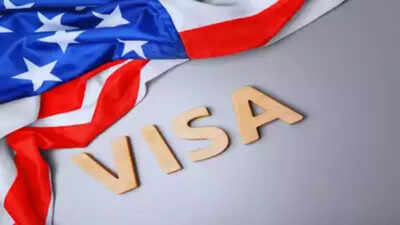
With over a million international students studying in the US, the country remains a top choice for higher education. To join them, understanding the F-1 student Visa process is essential.
The F-1 Visa allows non-immigrant students to study full-time at accredited US institutions. This guide covers key details including eligibility criteria, required documentation, SEVIS registration, and interview preparation. It also explains how to maintain your Visa status during your stay, outlines work options like CPT and OPT, and provides tips to avoid common mistakes. Begin your journey with confidence by mastering each step of the F-1 Visa application process.
What is US F-1 student Visa
The F-1 Visa is a non-immigrant Visa that permits international students to live and study full-time in the United States at SEVP-approved institutions. This includes universities, colleges, high schools, language training programs, and more. You can only apply for an F-1 Visa after receiving an admission offer from a certified US institution. Your duration of stay is defined by the I-20 form, which specifies your program’s start and end dates.
After graduation, students may apply for Optional Practical Training (OPT), which allows them to work in the US for up to 12 months, with STEM graduates eligible for a 24-month extension.
How to apply US student Visa F-1 online
- SEVIS ID number
- Program dates
- Field of study
- Financial information
Sign your I-20 after verifying the accuracy of all information. This form is essential for the Visa interview and US entry.
Before scheduling your interview, pay the SEVIS I-901 fee . Save the receipt, as it will be required during your interview.
- Complete the DS-160 Visa application
Submit the DS-160 form online and pay the $185 application fee. After submission, print the confirmation page with the barcode.
- Schedule your Visa interview
Book your interview appointment with your nearest US embassy or consulate. Interview wait times vary, so schedule early. You may consider mock interviews also to help prepare.
- Attend your Visa interview
Be ready to prove:You are a genuine student.You can finance your stay.You plan to return home post-graduation.
US F-1 Visa documents required
With over a million international students studying in the US, the country remains a top choice for higher education. To join them, understanding the F-1 student Visa process is essential. The F-1 Visa allows non-immigrant students to study full-time at accredited US institutions. Check below the required documents to apply for F-1 Visa:
- Valid passport
- I-20 form
- DS-160 confirmation
- SEVIS fee receipt
- Financial documents
- Academic transcripts and test scores
Quick tip 1: Answer honestly and confidently during the interview.
US F-1 Visa requirements
Before applying for your Visa, make sure you meet the following criteria:
- SEVP-certified institution: You must be admitted to a US institution certified by the Student and Exchange Visitor Program.
- Full-time enrollment: Only full-time students are eligible for an F-1 Visa.
- English proficiency: You need to demonstrate sufficient proficiency or enroll in language courses.
- Proof of funds: You must show financial ability to support tuition and living expenses.
- Valid passport: Your passport must be valid for at least 6 months beyond your program completion date.
- Intent to return: You must maintain a permanent residence in your home country for post-study return.
What to expect during the US F-1 Visa interview
The Visa interview is designed to confirm your academic intentions, financial preparedness, and plans post-graduation.
You’ll meet with a consular officer at your nearest US embassy or consulate.
Common interview questions
Be prepared to answer the following questions clearly and confidently:
- Why did you choose this university?
Show that you've researched the program and explain how it aligns with your academic or career goals.
- How will you pay for your education?
Provide proof of funding—bank statements, scholarships, or financial aid documents.
- What are your career plans after graduation?
Emphasize your intention to return to your home country and contribute professionally.
- Do you have relatives in the US?
Be honest. This helps assess your ties to home and potential immigration intent.Quick Tip 2:
Reasons for US F-1 student Visa denial and how to avoid them
Not all F-1 Visa applications are approved. Here are some common reasons for denial:
- Incomplete or inaccurate documentation
Any missing or incorrect paperwork can lead to delays or denial. Double-check your DS-160 form, I-20, financial statements, and transcripts.
- Lack of financial support
If the officer feels you cannot afford your education and living expenses, your Visa may be rejected. Be ready with authentic proof of sufficient funds.
- Unclear intent to return home
F-1 Visas are temporary. If you cannot demonstrate strong ties to your home country like family, property, or a job you may be denied.Quick tip 3: Consult your school’s international office to review your application before submission.
How to maintain US F-1 Visa status after approval
Once you've successfully entered the US on an F-1 Visa, it's vital to follow immigration rules to maintain your legal student status.Key requirements
- Enter the US no more than 30 days before your program starts.
- Check in with your school’s Designated School Official (DSO) upon arrival and before your program start date.
- Stay enrolled full-time during your academic terms.
- Maintain good academic standing throughout your program.
Notify your DSO before:
- Dropping or changing courses
- Taking a vacation or break
- Transferring to a different institution
Can F-1 international students work in the US
Yes, international students on an F-1 Visa are allowed to work in the United States but only under specific conditions set by immigration regulations according to the reports.
Key employment rules for F-1 Visa holders
- During academic terms, students are only permitted to work part-time (up to 20 hours per week) on campus.
- During scheduled academic breaks, such as summer or winter holidays, students may work full-time, if approved by the university.
- Off-campus employment is only permitted with authorization from your university and under specific programs like CPT or OPT.
Quick tip 4:
Plan your next move after graduation
Upon completing your degree, you have a 60-day grace period to plan your next move: Choose one of the following:
- Leave the US and return to your home country.
- Apply for OPT and work in a field related to your study.
- Transfer to another SEVP-approved school for further education.
Quick tip 5: Start exploring your options early and stay in close contact with your DSO to remain compliant.
F-1 study Visa checklist
With careful planning, thorough documentation, and the right guidance, obtaining an F-1 Visa can be a smooth process. Whether you're navigating SEVIS fees, scheduling interviews, or preparing for your arrival in the US. Check below a quick checklist to apply for an F-1 Visa in the US.
- Understand your F-1 Visa conditions
- Get familiar with employment rules and limitations
- Obtain DSO approval before accepting any job
- Prepare for post-graduation decisions in advance
- Start fulfilling USA study Visa requirements early

 2 hours ago
1
2 hours ago
1








